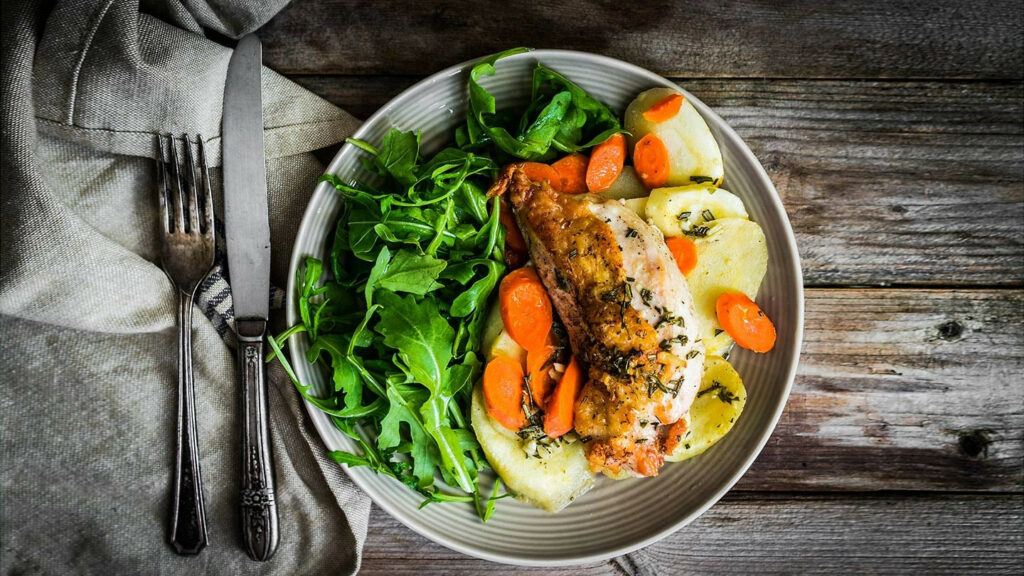The Low-Carb, High-Fat (LCHF) diet is a popular approach for weight loss and improved health. It involves reducing carbohydrate intake while increasing fat consumption. This comprehensive guide will provide you with an in-depth understanding of the LCHF diet, its benefits, potential risks, and how to get started.
Understanding the LCHF Diet:
The LCHF diet is based on the principle of restricting carbohydrates to promote fat burning and stabilize blood sugar levels. It emphasizes consuming healthy fats, moderate protein, and minimizing carbohydrate intake. By reducing carbs, the body enters a metabolic state called ketosis, where it starts using stored fat for fuel.
Benefits of the LCHF Diet:
a. Weight Loss: By limiting carbohydrates and increasing fat intake, the LCHF diet promotes weight loss. When the body enters ketosis, it efficiently burns stored fat, leading to a reduction in body weight and body fat percentage.
b. Improved Blood Sugar Control: The LCHF diet can be beneficial for individuals with diabetes or insulin resistance. By minimizing carbohydrate intake, blood sugar levels remain stable, reducing the need for insulin and improving overall glycemic control.
c. Increased Satiety: The higher fat and protein content of the LCHF diet can help keep you feeling full and satisfied for longer periods, reducing the urge to overeat and snacking between meals.
d. Improved Heart Health: Contrary to previous beliefs, research suggests that the LCHF diet can improve heart health markers by reducing triglyceride levels, increasing HDL (good) cholesterol, and reducing blood pressure.
Foods to Include on the LCHF Diet:
a. Healthy Fats: Avocado, nuts, seeds, olive oil, coconut oil, and fatty fish are excellent sources of healthy fats.
b. Protein: Include moderate amounts of lean meats, poultry, fish, eggs, and plant-based protein sources like tofu and tempeh.
c. Non-Starchy Vegetables: Leafy greens, broccoli, cauliflower, zucchini, and bell peppers are low in carbohydrates and high in fiber.
d. Full-Fat Dairy: Choose full-fat versions of yogurt, cheese, and milk, as they contain fewer carbohydrates than their low-fat counterparts.
Foods to Limit or Avoid:
a. High-Carb Foods: Limit or avoid foods like bread, pasta, rice, potatoes, sugary drinks, and processed snacks, as they are high in carbohydrates.
b. Sugars and Sweeteners: Minimize or eliminate added sugars, artificial sweeteners, and sugary desserts.
c. Processed and Trans Fats: Avoid processed foods, fried foods, and products containing hydrogenated oils.
Getting Started with the LCHF Diet:
a. Calculate Your Macronutrient Needs: Determine your individual macronutrient needs based on your goals and consult with a registered dietitian for personalized guidance.
b. Gradually Reduce Carbohydrate Intake: Start by gradually reducing your carbohydrate intake while increasing healthy fats and protein.
c. Monitor Your Body’s Response: Pay attention to how your body responds to the diet, including changes in energy levels, hunger, and overall well-being. Adjust your macronutrient ratios if necessary.
d. Stay Hydrated: Drink plenty of water to stay hydrated, as the LCHF diet can have a diuretic effect initially.
e. Include Adequate Fiber: Consume non-starchy vegetables and low-carb fruits to ensure an adequate fiber intake.
Potential Risks and Considerations:
a. Nutrient Deficiencies: The LCHF diet may be low in certain nutrients, such as vitamins C, E, and folate. Ensure you consume a variety of nutrient-dense foods and consider supplementation if necessary.
b. Keto Flu: Some individuals may experience flu-like symptoms, including fatigue, headaches, and irritability, during the initial transition to the LCHF diet. These symptoms are usually temporary and can be alleviated by staying hydrated and increasing electrolyte intake.
c. Individual Variation: The LCHF diet may not be suitable for everyone. Individuals with certain medical conditions or taking specific medications should consult with a healthcare professional before starting this diet.
Long-Term Sustainability:
The LCHF diet can be a sustainable long-term approach if it is well-balanced, nutrient-dense, and meets individual needs. It is essential to listen to your body, monitor your health markers, and make adjustments as necessary.
Remember, it’s always a good idea to consult with a registered dietitian or healthcare professional before starting any new diet or making significant changes to your eating habits. They can provide personalized guidance and help ensure that the LCHF diet is safe and appropriate for your individual needs and goals.
In conclusion, the LCHF diet is a low-carb, high-fat eating plan that promotes weight loss, improved blood sugar control, and increased satiety. By focusing on healthy fats, moderate protein, and reducing carbohydrate intake, individuals can achieve their health and weight loss goals. However, it’s important to consider individual variation, potential risks, and long-term sustainability. Working with a healthcare professional can help optimize the LCHF diet for your specific needs.
- Delta-10 THC A Comprehensive Guide to Effects, Benefits, and More - November 1, 2023
- Unleashing the Potential: The Comprehensive Guide to the Benefits of Theobromine in Nootropics - November 1, 2023
- The Comprehensive Guide to the Benefits of Turkey Tail Functional Mushrooms - November 1, 2023

